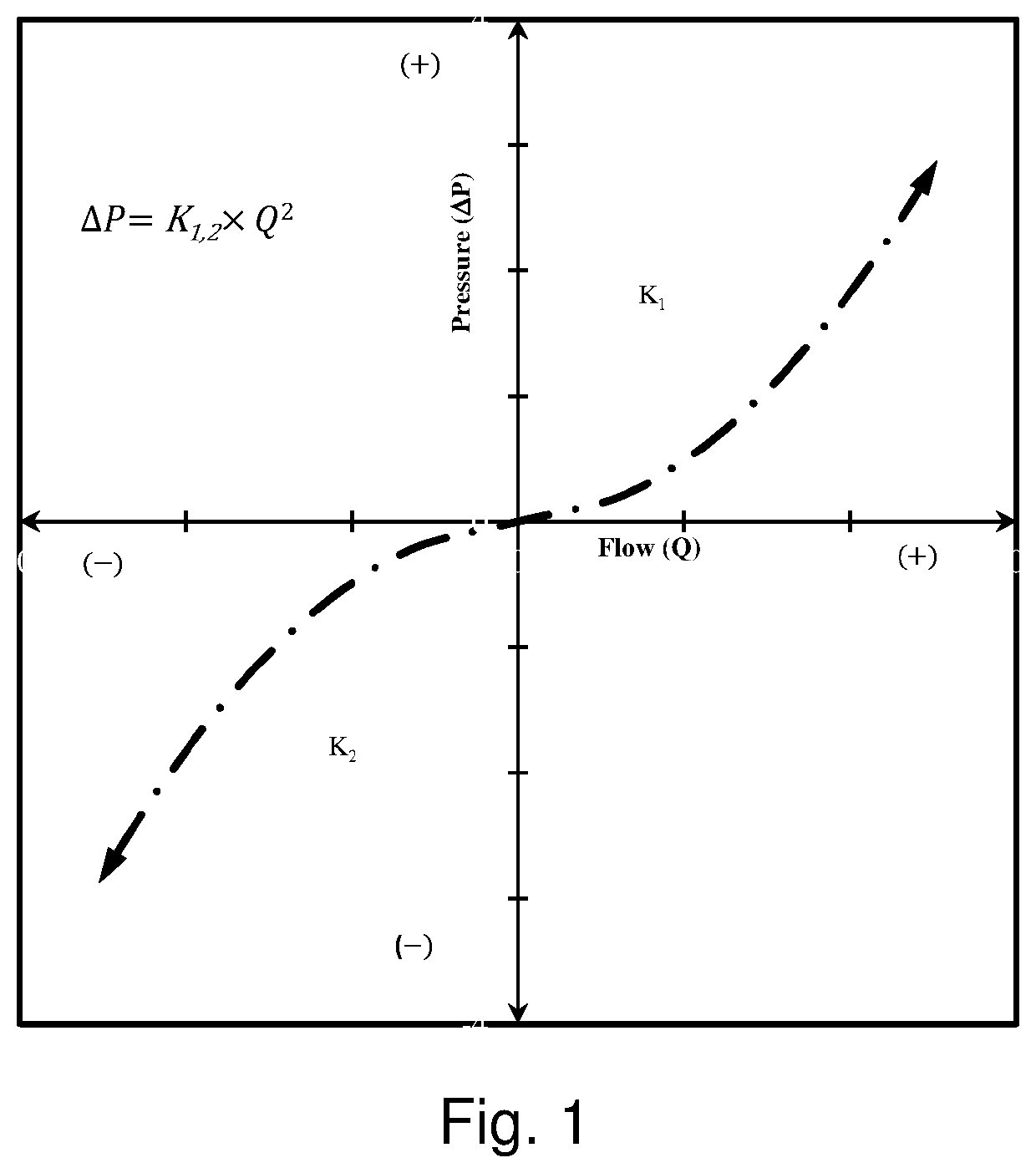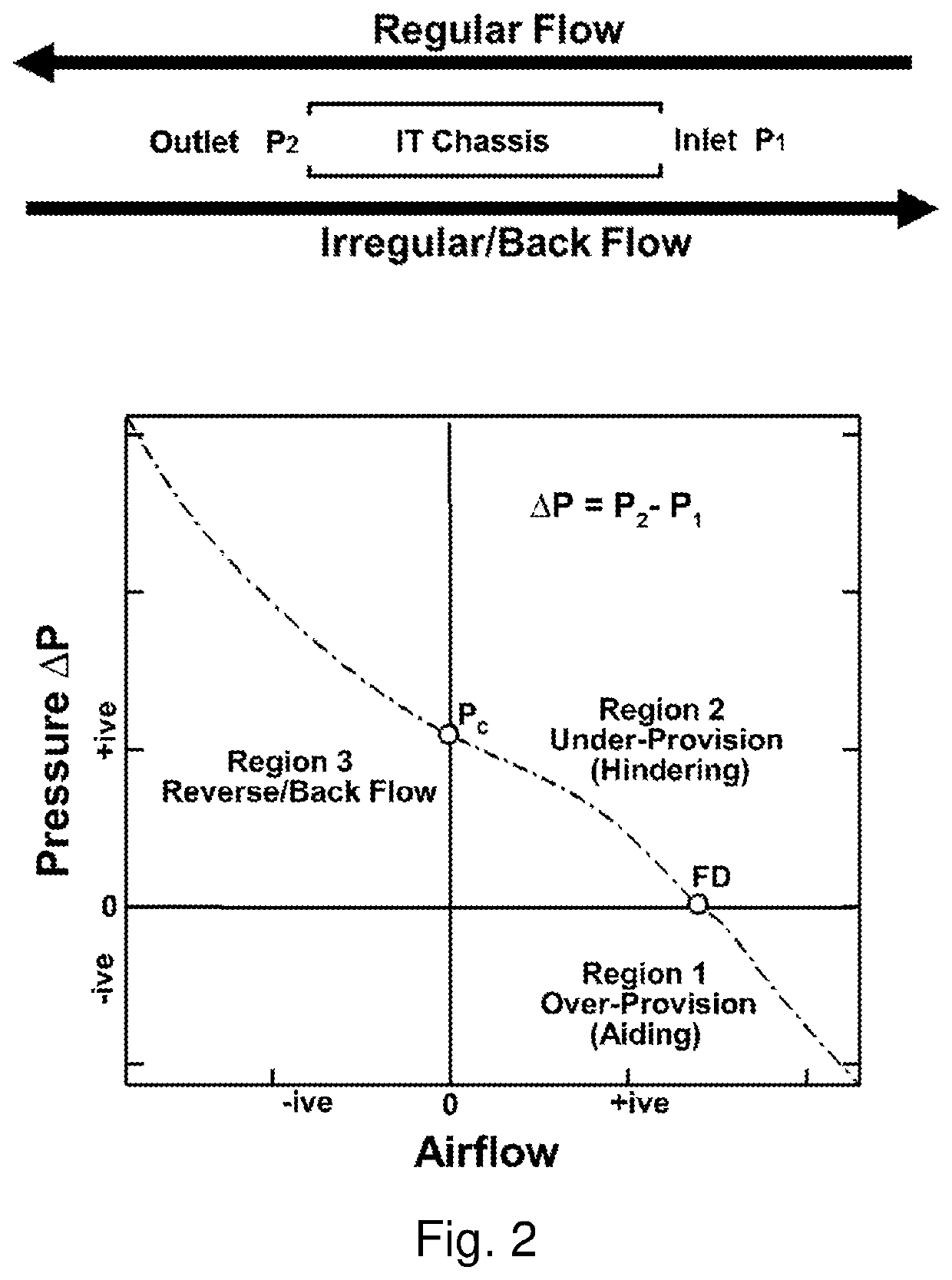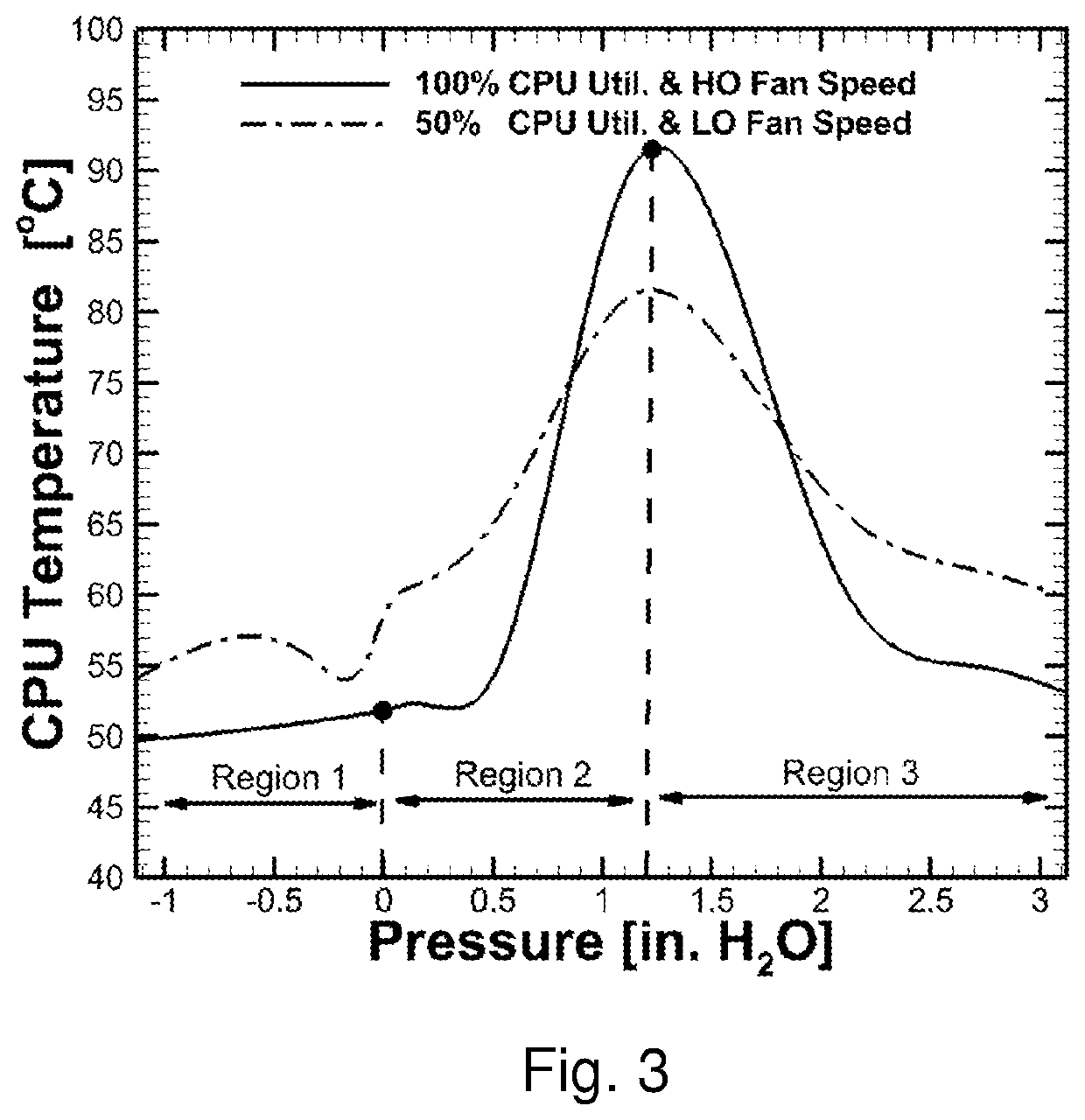Control systems and prediction methods for it cooling performance in containment
a control system and containment technology, applied in adaptive control, cooling/ventilation/heating modification, instruments, etc., can solve problems such as airflow mismatch between cooling units and information technology (it) equipment, and not representative of it equipment reliability, so as to reduce the amount of available cold air, reduce the capacity, and improve the effect of cooling efficiency
- Summary
- Abstract
- Description
- Claims
- Application Information
AI Technical Summary
Benefits of technology
Problems solved by technology
Method used
Image
Examples
Embodiment Construction
[0078]Generally, a legacy data center consists of an array of hot and cold aisles where the air intake to the IT equipment resides in the cold aisle and the air exhaust of the equipment rejects hot air into the hot aisle. In a raised floor environment, chilled air is supplied through the plenum to the cold aisle. The heated air in the hot aisle flow backs to the cooling unit return.
[0079]However, the recirculation of air from hot to cold aisles or vice versa is a common occurrence. This air recirculation endangers the well-being of servers and reduces data center cooling efficiency, resulting in an increased total cost of operation. To resolve these issues cold or hot aisle containment (CAC or HAC) solutions were introduced to segregate the incoming cold air stream from the heated exhaust stream. CAC or HAC cooling solutions allow higher chilled set point temperature and can enhance the performance of an air side economizer, which admits outside air to the cool air stream (when outs...
PUM
 Login to View More
Login to View More Abstract
Description
Claims
Application Information
 Login to View More
Login to View More - R&D
- Intellectual Property
- Life Sciences
- Materials
- Tech Scout
- Unparalleled Data Quality
- Higher Quality Content
- 60% Fewer Hallucinations
Browse by: Latest US Patents, China's latest patents, Technical Efficacy Thesaurus, Application Domain, Technology Topic, Popular Technical Reports.
© 2025 PatSnap. All rights reserved.Legal|Privacy policy|Modern Slavery Act Transparency Statement|Sitemap|About US| Contact US: help@patsnap.com



